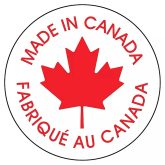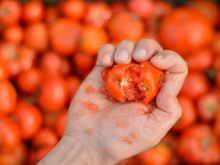A recent study of Canadians’ perceptions and actions surrounding local foods shows we don’t always put our money where our mouths are, in more ways than one. Yet Canadians do eat a lot of local food, if “local” is defined as Canadian.
Angus Reid polled Canadians about local food choices and Dalhousie University’s Agri-food Analytics Lab partnered in the process, delivering results that show Canadians want local but they buy with little regard for origin.
Not quite half of respondents said buying local food is somewhat important and about one-third say it is very important. The most important factor in decisions to buy local is a desire to support farmers, followed by aims to support the local economy and to support environmental sustainability. Respondents also said they think local foods weren’t any better than other foods when it comes to price or quality.
Read Also

Kochia has become a significant problem for Prairie farmers
As you travel through southern Saskatchewan and Alberta, particularly in areas challenged by dry growing conditions, the magnitude of the kochia problem is easy to see.
Canadians are likely right about that. Much imported food has great quality and questions can be asked about sustainable production wherever it is sourced.
Fruits and vegetables here are often imported, especially those we cannot easily grow. But we also import many of the fruits and vegetables we do grow here. Canada has a significant food canning and freezing business. Few of us eat American French fries.
Nearly all the bread we consume in the country is local if we consider domestic as local. About one-third of the wheat grown in Canada is either eaten by Canadians or their livestock. Some is processed into flour and foods for export, but the bulk is sent abroad for milling. Slowly but surely, Canadian milling is growing by about two percent per year.
Durum processing has been rising faster, by almost eight percent between 2019 and 2020 alone. And Canadians are consuming that pasta, so long as it is competitively priced.
Pulse crops consumed by Canadians are mostly local. And try finding mustard that isn’t Canadian, anywhere. It’s locally produced too.
About a quarter of the seafood caught or raised in Canada is domestically consumed, depending on whose production numbers one accepts.
Canadian greenhouse and indoor food production is growing rapidly. Fresh, domestically produced horticulture crops are competitive with those raised in Mexico and the United States in part due to the diesel economics of moving them south to north.
That said, the distances across Canada can be further than from American fields and orchards to Canadian consumers. That is one place Canadian-domestic local systems show cracks.
Dairy production in Canada, especially on the fresh milk side, is regionally local and nearly all of it is domestic by regulation. Fresh meat, except for lamb, is mostly Canadian due to the cost of transportation and distribution.
Canadian food security and supply assurance has always been relatively sound, at least in modern times. Now Canadians, like other citizens of the world, are paying more for their food as inflation rises and geopolitical circumstances create market instability.
However, the recent food study appears to show that Canadians are pretty pragmatic about the origins of their food, at least when it comes to the things they put in their mouths.
And if local is domestic, Canadians already eat local, even if they don’t know it.

















